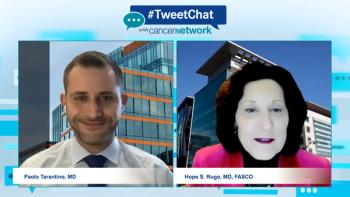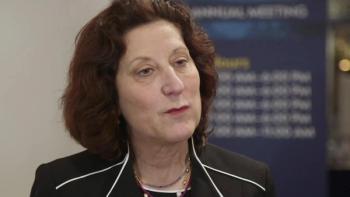
Expert oncologists discuss treatment options in the setting of recurrent triple-negative breast cancer.

Your AI-Trained Oncology Knowledge Connection!


Expert oncologists discuss treatment options in the setting of recurrent triple-negative breast cancer.

Hope S. Rugo, MD, FASCO, and Paolo Tarantino, MD compare treatment approaches for HER2-low and triple-negative breast cancer.

Paolo Tarantino, MD, an expert on breast cancer, gives an overview of neoadjuvant treatment options for triple-negative breast cancer.

Breast cancer experts Hope S. Rugo, MD, FASCO, and Paolo Tarantino, MD, present the case of a 52-year-old woman with triple-negative breast cancer and provide their initial thoughts.



Hope S. Rugo, MD, MBA, and Paolo Tarantino, MD, give a preview to a first-of-its-kind Tweet Chat taking place in January 2023.

Cancer Network spoke with Hope S. Rugo, MD, of the University of California, San Francisco, about the results of the phase III SOPHIA trial in HER2-positive breast cancer.

It may not be appropriate, nor always considered standard, to recommend neoadjuvant chemotherapy for all patients for whom adjuvant therapy was recommended before surgery. Indeed, tumor size and nodal status play a role, as do hormone receptors, in determining the appropriate extent of adjuvant therapy.

As half of all breast cancers occur in patients beyond the age of 65 and a quarter beyond the age of 75, a significant number of patients with metastatic breast cancer are elderly. New hormonal therapies, such as aromatase inhibitors, appear to have favorably improved the survival of these patients. Side effects such as osteoporosis or cognitive issues appear manageable. Information specific to elderly patients has recently emerged in the field of chemotherapy for metastatic breast cancer. This article reviews data on anthracyclines, taxanes, capecitabine (Xeloda), gemcitabine (Gemzar), trastuzumab (Herceptin), and bevacizumab (Avastin). For most patients in this setting, sequential single-agent chemotherapy appears at this time to be the preferred course of treatment.